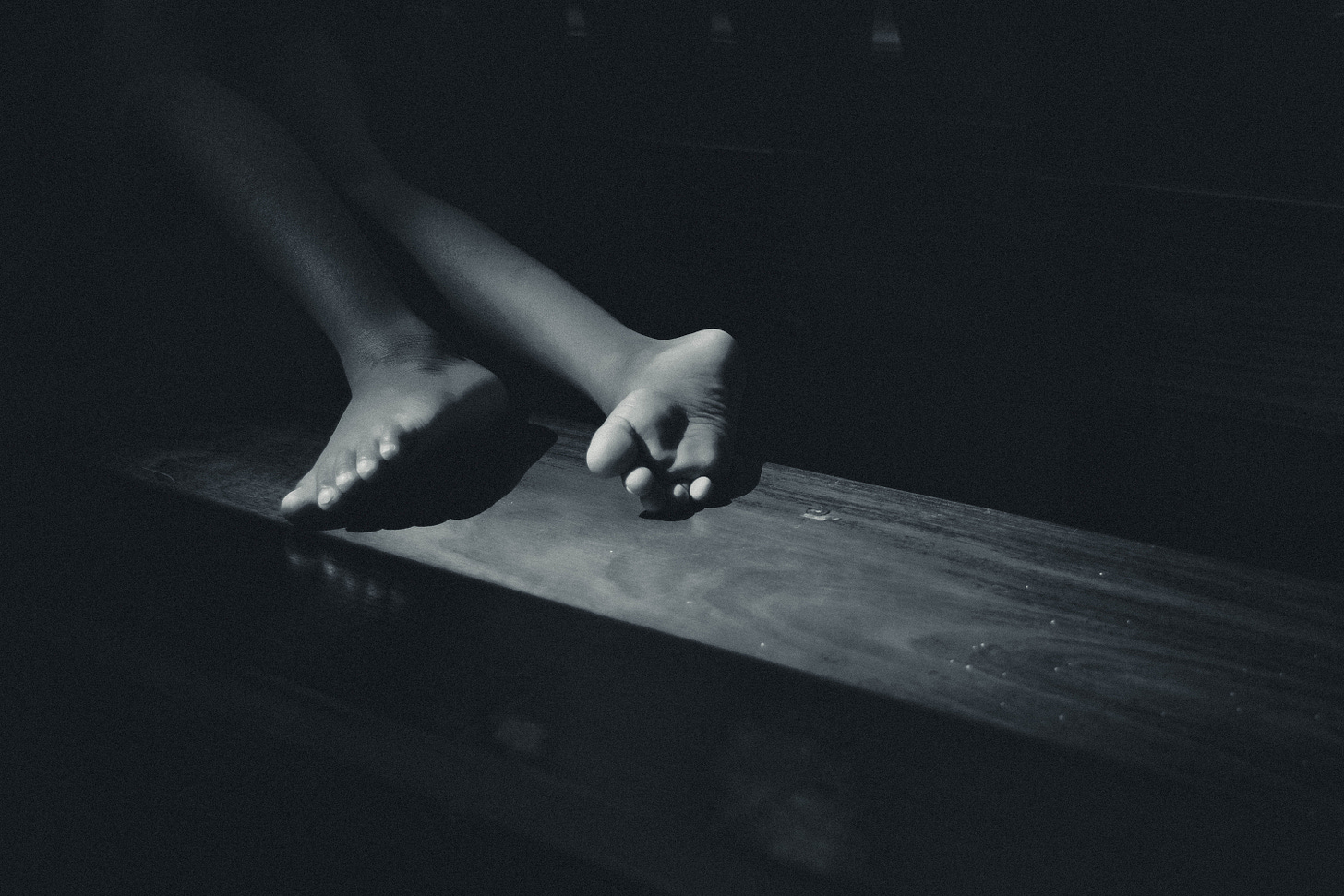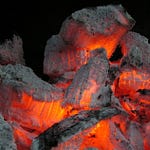Case study
Dear Prof G
I have secondary progressive multiple sclerosis and suffer from restless legs, preventing me from sleeping well. It takes me ages to fall asleep, and I wake up regularly. I nerve wake feeling refreshed. Is there anything you can do to help? I have had MS for over 20 years, and my mobility is severely limited. I can walk 30 to 50 metres with two sticks and use a wheelchair outdoors.

Prof G’s opinion
In my experience, restless leg syndrome (RLS) in people with MS is a bit of a dumping ground regarding the diagnosis. I am not saying RLS does not occur, but pwMS have discomfort in their legs at night for many reasons. So, not all restless legs are due to the RLS. This is why I would have to see this patient and examine them before making specific recommendations.
Spasticity
The most common RLS-mimic is spasticity and nocturnal leg jerks. Spasticity tends to go hand in hand with lower limb weakness and needs to be treated with anti-spasticity agents, which include baclofen, tizanidine, gabapentin, pregabalin, clonazepam and other benzodiazepines, tetrahydrocannabinol (THC) and other CB1 agonists (nabilone), and rarely nowadays dantrolene a direct muscle relaxant.
Pain Syndromes
Myelopathic pain is common in people with advanced MS and often causes leg discomfort. Pain syndromes must be managed with centrally-acting pain medications, such as duloxetine, tricyclic antidepressants, and gabapentinoids. THC (Sativex and Dronabinol) and other CB1 agonists (nabilone) also work. Many pwMS use CBD as monotherapy and claim it works. Currently, there is only one licensed form of CBD for epilepsy, and it can’t be prescribed for pain. Most patients, therefore, purchase CBD online, which I don’t recommend because of the risk of contaminants etc. In addition, CBD is potentially hepatotoxic; therefore, liver function tests should be done to monitor for this problem. Many pwMS use street or medicinal cannabis, which, although legal for medicinal use, can’t be prescribed under the NHS. Private clinics in the UK, both physical and online, are filling the gap. I have little doubt that cannabis helps pwMS get a better night's sleep, particularly those with pain and spasticity. Therefore, who am I to stop them from using cannabis?
Cramps
PwMS are as likely, if not more likely, to get leg cramps as people in the general population. Leg cramps are usually easily differentiated on history from other nocturnal leg movements and are managed accordingly.
Regular stretching exercises can help prevent leg cramps.
Stay well hydrated. Dehydration can contribute to muscle cramps, so drinking adequate water throughout the day is essential. This is particularly important during physical exertion or in hot weather conditions.
Maintaining a proper balance of electrolytes such as potassium, calcium, and magnesium is crucial to prevent leg cramps. This is where diet and supplements can be important.
Massaging the affected leg can relieve leg cramps. Apply gentle pressure to the cramped muscle and rub it using a circular motion.
Medications may be required if cramps are common and affect your sleep. Some pwMS find simple over-the-counter analgesics such as ibuprofen or paracetamol/acetaminophen can help relieve leg cramps. Other medications must be prescribed, including quinine, calcium channel blockers and gabapentinoids. It is also worth trying magnesium supplements.
Periodic nocturnal leg movements (PLMS)
PLMS is characterised by involuntary leg twitching or jerking movements during sleep. The movements are very sudden jerks and are actually due to myoclonus. They can occur every 15 to 40 seconds, sometimes throughout the night. Although many individuals with RLS also develop PLMS, most people with PLMS do not experience RLS. In general, PLMS of sleep responds to similar measures as RLS. i.e. gabapentinoids, methadone and dopamine agonists. We tend to avoid dopamine agonists because of the augmentation that occurs, i.e., the condition worsens. Other medications that may help include clonazepam, melatonin, anticonvulsants and selegiline. I have no personal experience using melatonin or selegiline for PLMS.
Restless Leg Syndrom (RLS)
RLS is an unpleasant or uncomfortable sensation in your legs and an irresistible urge to move them. The symptoms usually occur in the late afternoon and evening and are most severe at night when you are in bed. RLS disrupts sleep. An essential diagnostic tip is that moving your legs relieves the discomfort, and the discomfort occurs once you stop moving your legs.
I have suffered from RLS, so I know how it feels; I have lived the experience. My RLS used to happen when I was running a lot, for example, training to run a marathon. Since my accident and damaged right hip, I have had to stop running, which has cured me of RLS. RLS is common in athletes.
RLS is very common in pwMS. In the study below, 30% of pwMS fulfil diagnostic criteria for having RLS. This is a major problem as RLS causes or exacerbates insomnia and is strongly linked to daytime sleepiness and fatigue.
I ask all of my patients, time permitting, about their sleep patterns. If they describe insomnia and frequent waking, I explore it further. My experience with managing MS is that the figure of 30% for RLS prevalence in pwMS is a bit high. A figure closer to 10% or 1 in 10 pwMS would seem more realistic. But I may be wrong as I don’t use a validated screening tool when screening RLS in clinic. I say this because many other problems occur in MS that can cause RLS-like symptoms, which I have discussed above.
I hope you don’t mind completing a short survey to see how common RLS is in pwMS. It will take less than 5 minutes to complete, allowing us to understand the problem more deeply.
As a result of RLS, it may impact your mood and affect your daytime functioning. People with RLS often feel exhausted, have daytime sleepiness, poor attention and concentration, memory issues, decreased productivity, depression and anxiety. Do any of you suffer from these problems?
RLS may go into remission, where symptoms decrease or disappear for weeks or months. However, symptoms often reappear and become more severe over time.
RLS is more common in people with end-stage renal disease who are on hemodialysis; I would know my father had chronic renal failure and complained of severe RLS. Other conditions associated with RLS include neuropathy, sleep deprivation, vigorous exercise, pregnancy and menopause. Alcohol, nicotine, caffeine, anti-emetics, antipsychotics, antidepressants that increase serotonin and over-the-counter cold and allergy medications that contain older antihistamines are also associated with RLS.
Because of the above, it shouldn’t be assumed that the RLS is due to MS. You must have a medical history taken and a thorough neurological and physical exam to exclude other causes of RLS. Blood tests may need to be done to rule out other conditions causing RLS symptoms, such as renal dysfunction, low iron levels or pregnancy. In addition, you may need a sleep study to see whether or not you have another sleep disorder, such as sleep apnoea and pregnancy.
Treating RLS
There is no cure for RLS, but some symptoms can be treated. Moving your affected limb(s) may provide temporary relief. Sometimes, RLS symptoms can be controlled by treating an associated medical condition, such as peripheral neuropathy, diabetes, or iron deficiency anaemia. Peripheral iron levels can be expected, so oral iron supplements don’t always work. Many neurologists resort to giving people with RLS a trial of intravenous iron to see if it helps.
In my experience, the best treatment for RLS are the gabapentinoids, i.e. gabapentin or pregabalin. Many neurologists still use dopamine agonists such as ropinirole, pramipexole and rotigotine. However, daily long-term use of dopaminergic drugs can eventually worsen symptoms and are associated with complications. Opioids also work if the gabapentinoids fail. The best opioid to use is methadone, as it has the lowest risk of addiction.
In MS, if there is a comorbidity such as spasticity, then benzodiazepines help. I use clonazepam, but diazepam and lorazepam can also be prescribed. Benzodiazepines are associated with tachyphylaxis, i.e. the body gets used to the effects, and the dose has to be increased to maintain the same treatment effect. Please be aware that benzodiazepines are also addictive and can’t be stopped suddenly.
Lifestyle changes and activities may provide some relief if you have mild to moderate RLS. These include:
Avoid or decrease the use of alcohol, nicotine, and caffeine
Change or maintain a regular sleep pattern
Try moderate, regular exercise rather than intermittent vigorous exercise
Massage the legs
Try a warm bath
Apply a heating pad or ice pack
Use foot wraps specially designed for people with RLS
Try vibration pads on the back of the legs
Do leg-stretching exercises of moderate intensity
Try magnesium supplements
Have I left anything out? I am sure many of you have RLS and have worked out something different from the above. Please share your experiences so we can all learn from each other. Thank you.
Research paper
Objectives: This study assessed the prevalence of restless leg syndrome (RLS) among patients with multiple sclerosis (pwMS) and the association between RLS and MS disease duration, sleep disturbance, and daytime fatigue.
Methods: In this cross-sectional study, we interviewed 123 patients via phone calls using preset questionnaires containing the International Restless Legs Syndrome Study Group (IRLSSG) diagnostic criteria, Pittsburgh Sleep Quality Index (PSQI), and Fatigue Severity Scale (FSS) diagnostic criteria validated in both Arabic and English. The prevalence of RLS in MS was compared to a group of healthy controls.
Results: The prevalence of RLS in pwMS, defined by meeting all four requirements included in the IRLSSG diagnostic criteria, was 30.3% compared to 8.3% in the control group. About 27.3% had mild RLS, 36.4% presented with moderate, and the remaining had severe or very severe symptoms. Patients with MS who experience RLS had a 2.8 times higher risk of fatigue compared to pwMS without RLS. pwMS with RLS had worse sleep quality, with a mean difference of 0.64 in the global PSQI score. Sleep disturbance and latency had the most significant impact on sleep quality.
Conclusion: The prevalence of RLS among MS patients was significantly higher compared to the control group. We recommend educating neurologists and general physicians to increase their awareness of the increasing prevalence of RLS and its association with fatigue and sleep disturbance in patients with MS.
Subscriptions and donations
Paid subscriptions to MS-Selfie are being used to administer the Newsletter and associated MS-Selfie microsite, which is now open to all readers. At the request of several readers, I have now added the option of making a one-off donation. To keep this initiative open to all readers, I would appreciate it if those who can afford a subscription to subscribe. For active paying subscribers, thank you; your contribution is much appreciated. Because of the falloff in paying subscribers, I am considering returning to a paywall that will give paying subscribers six months of unlimited access to all newsletters. At the same time, free subscribers will have a wait to access the newsletters later, not as an email, but on the substack site.
General Disclaimer: Please note that the opinions expressed here are those of Professor Giovannoni and do not necessarily reflect the positions of Barts and The London School of Medicine and Dentistry nor Barts Health NHS Trust. The advice is intended as general and should not be interpreted as personal clinical advice. If you have problems, please tell your own healthcare professional, who will be able to help you.














Share this post